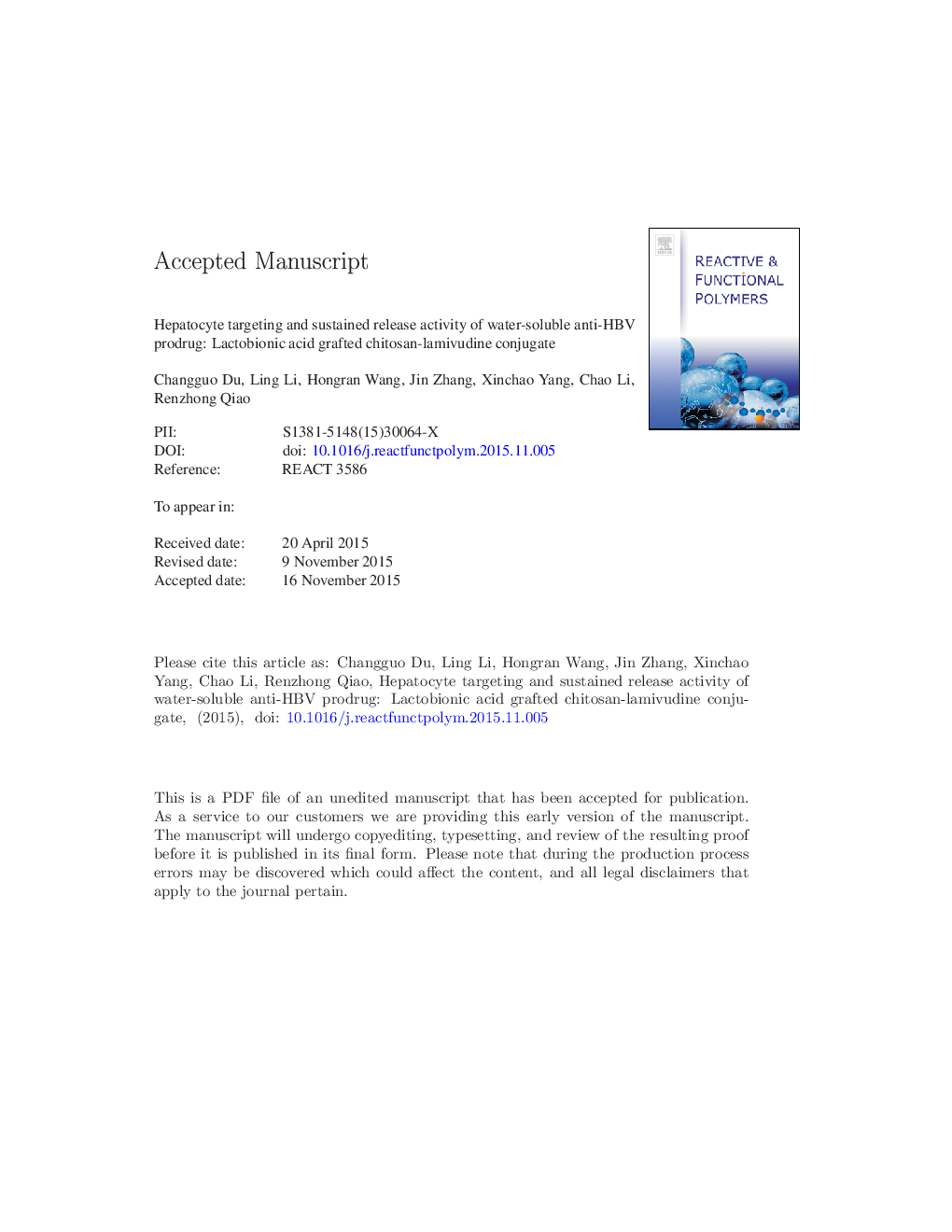| Article ID | Journal | Published Year | Pages | File Type |
|---|---|---|---|---|
| 5209701 | Reactive and Functional Polymers | 2016 | 22 Pages |
Abstract
Lamivudine (3TC), a contemporary anti-HBV drug, has limited clinical application due to its non-specific biodistribution and side effects on normal cells. A new hepatocyte-targeting prodrug LA-CS-3TC is synthesized based on covalently linking 3TC and lactobionic acid with chitosan. Lactobionic acid can specifically bind to the asialoglycoprotein receptor on the hepatocyte surface. In our study, the degrees of substitution of 3TC on chitosan polymer are 14.9%, while lactobionic acid moiety increases the intracellular accumulation of prodrug in HepG2.215 cells. LA-CS-3TC shows superior sustained release ability at pHÂ 7.4 compared with CS-3TC and the major release product isopropyl-5â²-O-lamivudine monophosphate (3TC-P-H) can enhance the therapeutic effects. Also, LA-CS-3TC demonstrates lower cytotoxicity and higher water-solubility than the parent compound. Hence, it is depicted that the chitosan modified with lactobionic acid could be applied as a potential anti-HBV drug vector with water-soluble, hepatocyte targeted, lowly cytotoxic and sustained release.
Related Topics
Physical Sciences and Engineering
Chemistry
Organic Chemistry
Authors
Changguo Du, Ling Li, Hongran Wang, Jin Zhang, Xinchao Yang, Chao Li, Renzhong Qiao,
